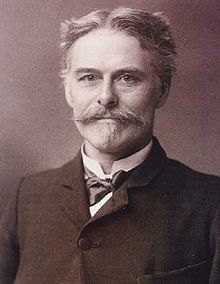The Pennsylvania Portal Pennsylvania (/ˌpɛnsɪlˈveɪniə/ ⓘ, lit. 'Penn's forest country'), officially the Commonwealth of Pennsylvania (Pennsylvania Dutch: Pennsylvanie), is a state spanning the Mid-Atlantic, Northeastern, Appalachian, and Great Lakes regions of the United States. Pennsylvania borders Delaware to its southeast, Maryland to its south, West Virginia to its southwest, Ohio and the Ohio River to its west, Lake Erie and New York to its north, the Delaware River and New Jersey to its east, and the Canadian province of Ontario to its northwest. Pennsylvania is the fifth-most populous state in the United States, with over 13 million residents as of the 2020 United States census. The state is the 33rd-largest by area and has the ninth-highest population density among all states. The largest metropolitan statistical area (MSA) is the southeastern Delaware Valley, which includes and surrounds Philadelphia, the state's largest and nation's sixth-most populous city. The second-largest metropolitan area, Greater Pittsburgh, is centered in and around Pittsburgh, the state's second-largest city. The state's subsequent five most populous cities are Allentown, Reading, Erie, Scranton, and Bethlehem. The state capital is Harrisburg. Pennsylvania's geography is highly diverse. The Appalachian Mountains run through the center of the state; the Allegheny and Pocono mountains span much of Northeastern Pennsylvania; close to 60% of the state is forested. While it has only 140 miles (225 km) of waterfront along Lake Erie and the Delaware River, Pennsylvania has the most navigable rivers of any state in the nation, including the Allegheny, Delaware, Genesee, Ohio, Schuylkill, Susquehanna, and others. (Full article...) This is a Featured article, which represents some of the best content on English Wikipedia..
Edward Drinker Cope (July 28, 1840 – April 12, 1897) was an American zoologist, paleontologist, comparative anatomist, herpetologist, and ichthyologist. Born to a wealthy Quaker family, he distinguished himself as a child prodigy interested in science, publishing his first scientific paper at the age of 19. Though his father tried to raise Cope as a gentleman farmer, he eventually acquiesced to his son's scientific aspirations. Cope had little formal scientific training, and he eschewed a teaching position for field work. He made regular trips to the American West, prospecting in the 1870s and 1880s, often as a member of U.S. Geological Survey teams. A personal feud between Cope and paleontologist Othniel Charles Marsh led to a period of intense fossil-finding competition now known as the Bone Wars. Cope's financial fortunes soured after failed mining ventures in the 1880s, forcing him to sell off much of his fossil collection. He experienced a resurgence in his career toward the end of his life before dying on April 12, 1897. (Full article...)Selected geography article -Quehanna Wild Area (/kwəˈhænə/) is a wildlife area within parts of Cameron, Clearfield and Elk counties in the U.S. state of Pennsylvania; with a total area of 50,000 acres (78 sq mi; 202 km2), it covers parts of Elk and Moshannon State Forests. Founded in the 1950s as a nuclear research center, Quehanna has a legacy of radioactive and toxic waste contamination, while also being the largest state forest wild area in Pennsylvania, with herds of elk. The wild area is bisected by the Quehanna Highway and is home to second growth forest with mixed hardwoods and evergreens. Quehanna has two state forest natural areas: the 1,215-acre (492 ha) M.K. Goddard/Wykoff Run Natural Area, and the 917-acre (371 ha) Marion Brooks Natural Area. The latter has the largest stand of white birch in Pennsylvania and the eastern United States. The land that became Quehanna Wild Area was home to Native Americans, including the Susquehannock and Iroquois, before it was purchased by the United States in 1784. Settlers soon moved into the region and, in the 19th and early 20th centuries, the logging industry cut the virgin forests; clearcutting and forest fires transformed the once verdant land into the "Pennsylvania Desert". Pennsylvania bought this land for its state forests, and in the 1930s the Civilian Conservation Corps worked to improve them. In 1955 the Curtiss-Wright Corporation bought 80 square miles (210 km2) of state forest to focus on developing nuclear-powered jet engines. They named their facility Quehanna for the nearby West Branch Susquehanna River, itself named for the Susquehannocks. (Full article...)Selected image -Did you know -
Related portalsWikiprojectsThis is a Good article, an article that meets a core set of high editorial standards.
Pickett's Charge (July 3, 1863), also known as the Pickett–Pettigrew–Trimble Charge, was an infantry assault ordered by Confederate General Robert E. Lee against Major General George G. Meade's Union positions on the last day of the Battle of Gettysburg in Pennsylvania during the Civil War. Confederate troops made a frontal assault toward the center of Union lines, ultimately being repulsed with heavy casualties. Suffering from a lack of preparation and problems from the onset, the attack was a costly mistake that decisively ended Lee's invasion of the north and forced a retreat back to Virginia. The charge is popularly named after Major General George Pickett, one of three Confederate generals (all under the command of Lieutenant General James Longstreet) who led the assault. (Full article...)Selected article -
The Braddock expedition, also called Braddock's campaign or (more commonly) Braddock's Defeat, was a British military expedition which attempted to capture Fort Duquesne (established in 1754, located in what is now downtown Pittsburgh) from the French in the summer of 1755, during the French and Indian War of 1754 to 1763. The British troops suffered defeat at the Battle of the Monongahela on July 9, 1755, and the survivors retreated. The expedition takes its name from General Edward Braddock (1695–1755), who led the British forces and died in the effort. Braddock's defeat was a major setback for the British in the early stages of the war with France; John Mack Faragher characterises it as one of the most disastrous defeats for the British in the 18th century. (Full article...)
Pennsylvania news
CategoriesState factsState Facts
State symbols
Pennsylvania topicsGeneral imagesThe following are images from various Pennsylvania-related articles on Wikipedia.
Associated WikimediaThe following Wikimedia Foundation sister projects provide more on this subject:
Discover Wikipedia using portals |


































































